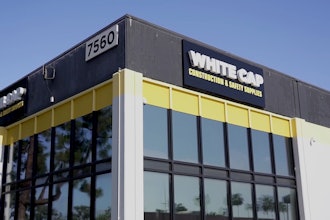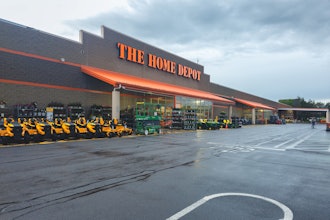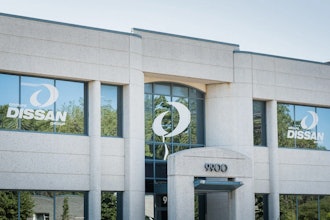
This is Part Three of a Three-part Series of Conversations with Holden Lewis, Managing Director, BB&T Capital Markets & Helgi Leja, Senior Account Executive, Fortna Inc. If you missed Part One, click here, or Part Two, click here.
In a recent conversation you mentioned industrial distributors should “unbundle their services.” Can you please provide detail specific to that comment?
Holden Lewis, BB&T Capital Markets |
LEWIS: Even in the late 1990s/early 2000s, when Wall Street was convinced that the Internet would cause distribution to be dis-intermediated in favor of direct shipments from OEMs to users, customer surveys indicated they wanted their distributors to do more, not less. Industrial distribution is no longer just break-bulking. Staffing has been leaned out at manufacturers, and as employees went out the door, so did knowledge, training, managed tool cribs, etc. Distributors have been asked to pick up the slack. Product breadth, availability, and speed of delivery were noted as three of the four most customer-valued capabilities for distributors in a Modern Distribution Management article, “How to Analyze Your Marketing Claims,” (August 25, 2011). But the next five are technical support, training, non-stocked sourcing, and onsite services. The message is clear that customers value the non-fulfillment services a distributor can offer.
The second message is services can differentiate smaller distributors. Firms with 300,000 products or more may access OE reps for technical questions, but areas like product knowledge, substitution ideas, advice on the most efficient utilization of products, etc., are not their strengths. A smaller distributor focused on a specific line-of-trade can offer this, but it often does so as part of the cost of the product. It does not monetize the services provided; despite the fact that customers have said in survey after survey they value these types of services.
A distributor should be able to document the value-add it brings when it provides non-fulfillment services, and should be able to share in the benefits the customer receives from them rather than give them away free with the cost of the product. Documenting value-add should also insulate a distributor from price pressure.
For a distributor that has long provided value-added services but has never tried to identify and be compensated for them, suddenly charging for those services can be threatening. However, to not quantify the value being brought to a relationship may cause that value to be taken for granted by a customer and possibly lead to losing the customer to a distributor who can. To not be compensated for continuing to load on services without realizing some return on that is a recipe for long-term margin pressure. The long-term model for smaller distributors will have to rest on value-add services. They will need to be able to price and get paid for those services.
Helgi Leja, Fortna |
LEJA: Everyone wants more value for less. What many distributors do not do well is articulate that value clearly and openly with customers and clients. They fail to calculate and communicate the incremental value for such services. Many times because it is not as straight forward as it might seem. For example, we helped a client by providing some professional services gratis, assisted with replacing items no longer under warranty, and helped find a job for the client’s friend. It was easy to assign a value to the first two, but, the third was much more subjective. You have to move away from a “transactional” approach to service. You can’t win in the “commodity” business, but you can win with service and consistent proof that you are a valued and proven partner.
My suggestion is to track all value-added services by client/customer and implement a periodic process to review those openly. I’ve found that by having open discussions around what we do for our clients to support their business and personal success essentially eliminates conversations debating a point or two on margin. Candor/open dialogue is one way to maintain margins (or charge for new services) and goes a long way toward ensuring that your value-add services are not “taken for granted.”
In the uncertain economic times of today, what would you consider the “tipping points” to making business decisions (for example, invest vs. hold; buy vs. status quo, etc.)?
LEWIS: It can be difficult to perceive when a distributor gets into trouble. Ways that distributors can implode quickly include mismanaging inventory and/or offering ever increasing services without getting paid for them. In both cases, the distributor starves itself of the capital needed to maintain current operations and invest for future. Quite frequently, however, a distributor is apt to be overly conservative and risk-averse yet able to maintain relationships (which still matter) in such a way that the business can easily carry on at a level that supports the owners of the business.
That does not mean a squeeze is not on, however. The local nature of distribution and the sticky nature of relationships can breed a false sense of security. Distributors with capital to invest may have made logistical or sourcing strides to lower their cost of doing business, providing them with greater flexibility to be aggressive with price for certain key customers without sacrificing margins. The smaller distributor can meet the challenge, but probably not without squeezing profitability. As raw materials rise or demand surges, a distributor with more capital will be able to invest in inventory. The smaller distributor without extra capital to boost the inventory will be forced to use price to combat a competitor’s availability, further squeezing margins and hurting the long-term position of the firm. A distributor who chooses to invest
capital may be building out additional channels, such as vending machines, bin stocking, etc., giving them more ways to draw customers. The point is a distributor who is not investing is far more likely to suffer a slow death than an implosion.
So what are some of the signals of such a squeeze?
LEWIS: The first is access to capital and the second is competing on price. You must ask the following questions: Does sufficient capital (and willpower) exist to sufficiently manage inventories under any circumstances? Does sufficient capital (and willpower) exist to apply capital to expanding the business – the channels, the services, the offerings? Does sufficient capital (and willpower) exist to invest in IT?
During the Great Recession the best-in-class distributors were remarkably adept at not cutting price; they competed on services and availability. Many smaller distributors used price to overcome their deficiencies in the services/availability arena, to the detriment of profitability. If a distributor reacts to weaker demand with price, or suffers through higher fuel costs without raising price or implementing surcharges, it is likely an indicator of a weak competitive position.
In our view, economic changes, raw material disruptions, capital availability, etc., are not themselves tipping points. But if a distributor reacts to these events by competing on price, liquidating the balance sheet, abandoning capital investments, or losing money, it is probably slowly losing in the market.
LEJA: It really comes down to the right blend of service, product availability, and price in order to drive competitive advantage and guarantee long-term survival. For distributors who are feeling the squeeze, we think it’s critical to assess the supply chain tipping points. For example, would a change to your supply chain network allow for a lower cost to serve AND better service so you don’t have to compete on price only? Would a change in your operations allow for more value-added services for which, you can charge a premium? Would a change to your network allow you to handle direct orders differently than wholesale orders (and provide a competitive edge)? Would adding a new facility eliminate business risk?
We think that understanding the point at which a change in your circumstances dictates a change in your strategy allows for more confident decision-making in an uncertain economy.
Holden Lewis is the Managing Director and Senior Equity Research Analyst, Commercial & Industrial Group at BB&T Capital Markets.In The Wall Street Journal's annual "Best on the Street" analyst survey, Lewis was ranked #5 in the business and industrial services industry for his stock picking abilities in 2010 and #3 in 2007.
Helgi Leja is a Senior Account Executive, Industrial Distribution Division, at Fortna. Helgi Thor Leja works with leading Industrial Distributors to drive improvements in distribution that result in top-line growth and bottom-line efficiencies. He runs the Industrial Distribution practice at Fortna Inc. which includes clients such as MSC Industrial, whose joint projects resulted in the single biggest cost-down initiative in the company’s history.
About Fortna
Fortna is a professional services firm helping companies with complex distribution operations meet customer promises and competitive challenges profitably. We develop a solid business case for change and hold ourselves accountable to those results. Our expertise spans supply chain strategy, distribution center operations, material handling, supply chain systems and organizational excellence. Fortna helps companies assess their operations, develop a strategy and roadmap for future success and build a business case for investment. To learn more, ask industry experts: Call: 800-367-8621 (US) or 610-370-8000 (Int’l.); Email: [email protected]; Web: www.fortna.com.


















